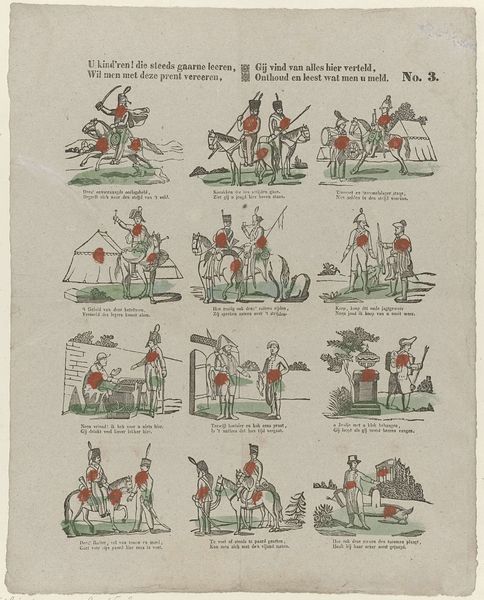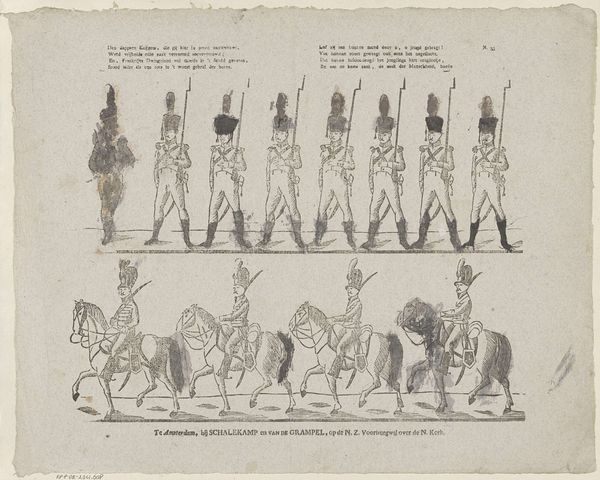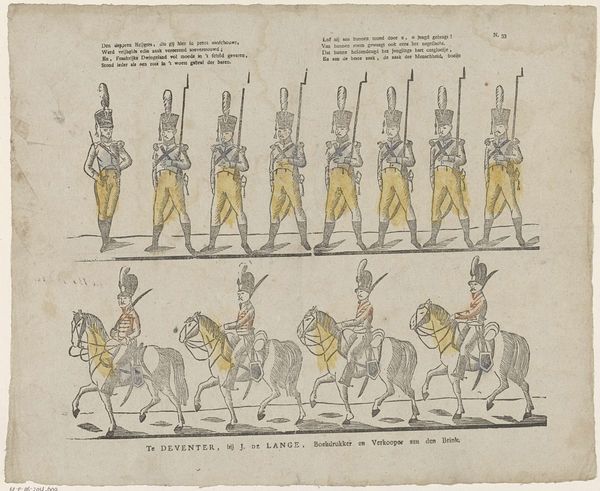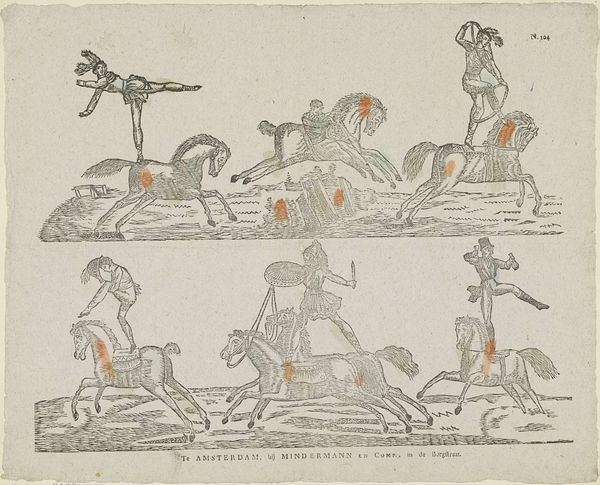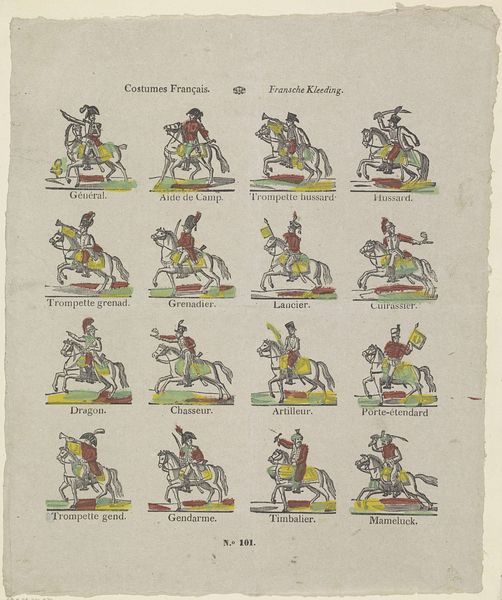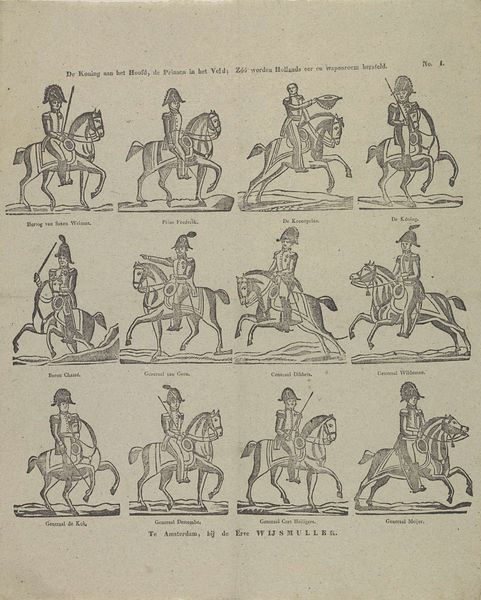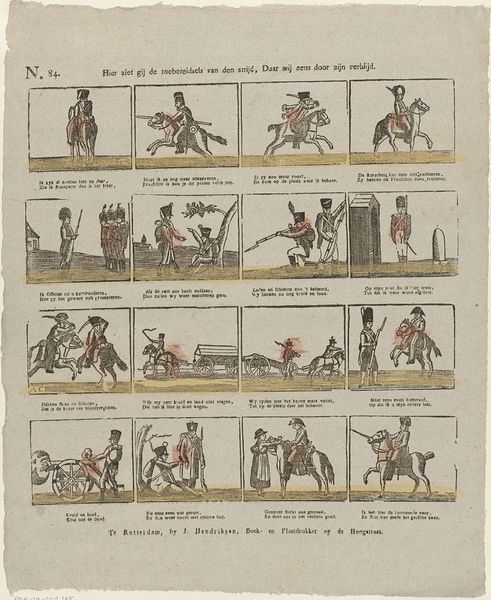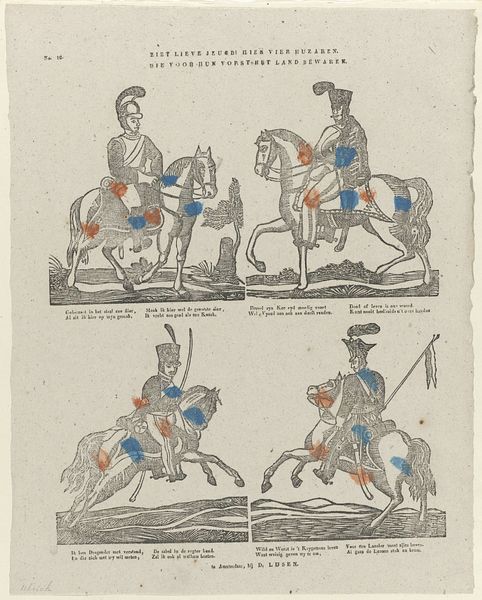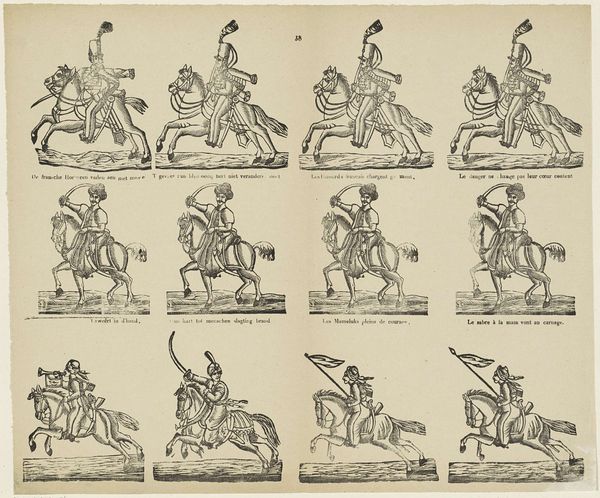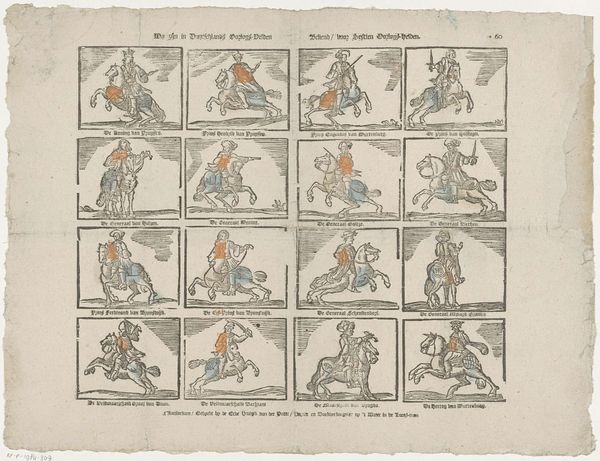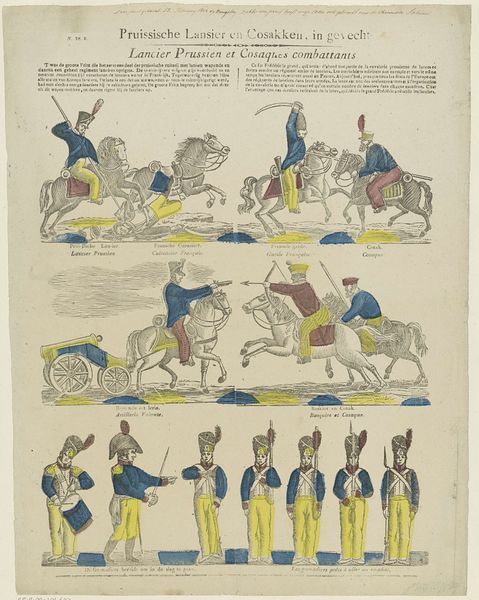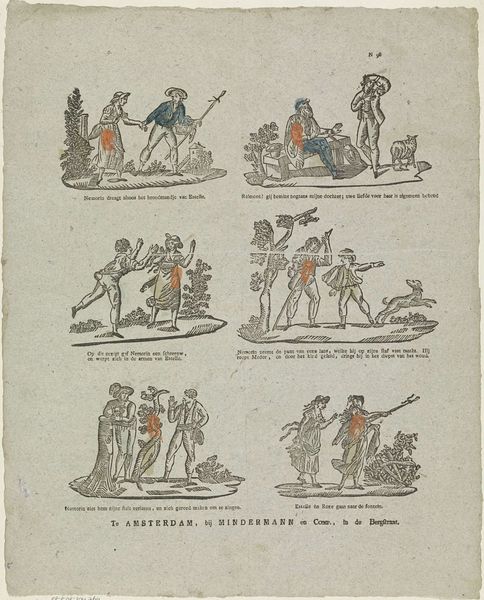
print, engraving
#
portrait
# print
#
genre-painting
#
history-painting
#
engraving
Dimensions: height 325 mm, width 409 mm
Copyright: Rijks Museum: Open Domain
Curator: What strikes me first is the sheer quantity of figures crammed onto one sheet. A whole bestiary of power! Editor: It's quite crowded, isn't it? Gives a sort of ordered chaos feel, like a royal parade gone slightly awry. But let's properly introduce it: This is “Keizers en koningen te paard”, or Emperors and Kings on Horseback, an engraving made by Johannes Seydel sometime between 1776 and 1813. Curator: Engravings like this served not just as portraits but as symbolic representations of leadership and historical lineage. The horses themselves aren't simply steeds, they amplify authority. Editor: Precisely! And consider the technique, the meticulous lines of the engraving. The physical act of carving the image emphasizes labor as a reflection of worth. Reproducing images like this made them available for wider audiences. How were such images consumed and what type of person had access to them? Curator: Access would have been key. Each king, emperor, czar and their noble steed evokes specific memories. And, significantly, the print offered these potent symbols within reach. They carried narratives – a language of power immediately recognizable. Editor: Do you think the intended viewers dwelled on those historical lineages or used it as reference points for the existing geopolitical landscape? Given the social function prints often performed, what types of ink were most readily available at this place and time? Curator: The images definitely mirrored, even amplified, contemporary power structures and royal houses. Think of them almost as collectible cards. Editor: And the deliberate artistic choices. Why this paper? Was it local? Was it easily mass produced for wider distribution in the face of conflicts at that moment? The answers matter. Curator: Absolutely. Every decision – the figures selected, the way they're framed – shaped how viewers understood the idea of power. This little world on a sheet serves as a complex historical document, doesn't it? Editor: Indeed. Exploring the socio-economic dynamics interwoven within production can further open our perspectives regarding not only historical circumstances but present-day concerns of art and materiality.
Comments
No comments
Be the first to comment and join the conversation on the ultimate creative platform.
